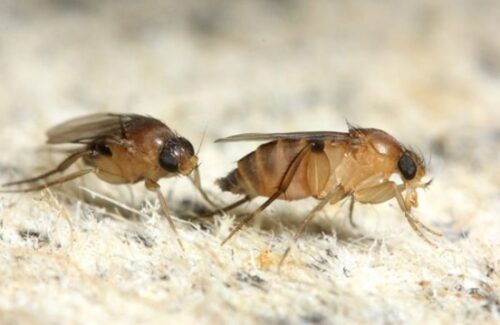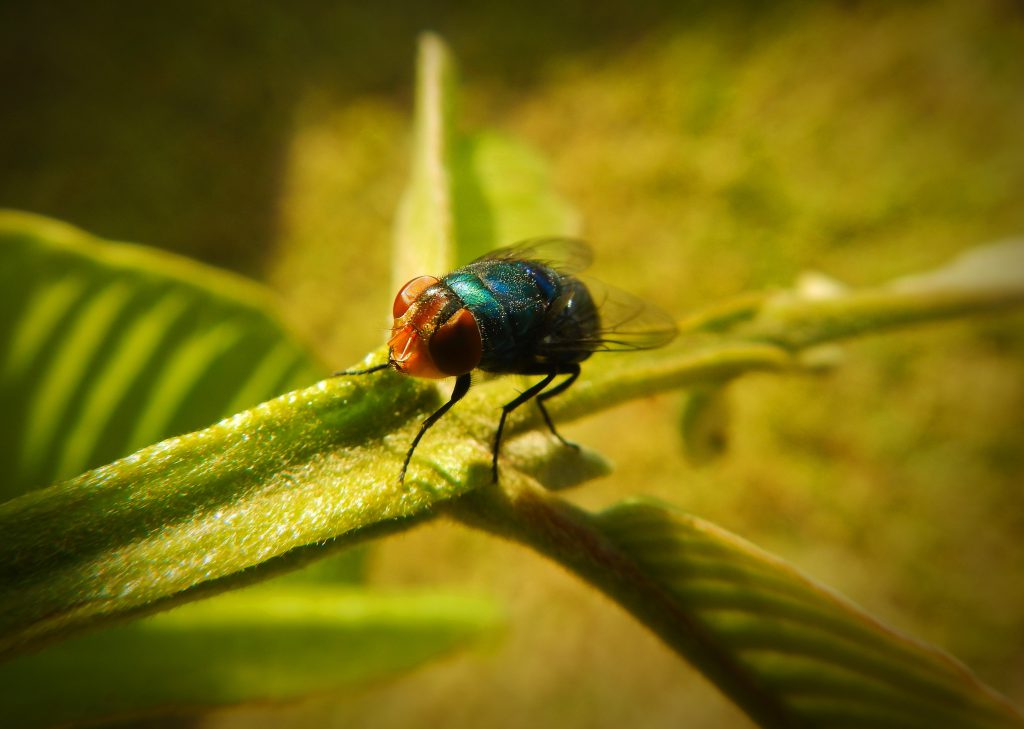Table of Contents
ToggleIt is quite common that insect infestation increases as the weather gets warmer. These insects can become a problem if they are not controlled. Most flying insects have adapted by laying large clusters of eggs, allowing their numbers to increase quickly once they have found a place to live.
The process of extermination and prevention is different for every insect; therefore, it is very important to identify them correctly. To help you differentiate, we have listed some of the most common flying insects in Canada below:
House Fly

The house Fly is the most common type of fly as it can adapt to living anywhere. Houseflies are easily identifiable due to their distinct shape and large eyes. The body of a housefly is typically divided into three parts: head, abdomen, and thorax. The body size and color of the fly depend on the species. The average size of these flies is not more than 10 mm in length.
Habitat and Life Cycle
Houseflies are mostly found near food sources. They nest near regular food such as bananas and leftover meat, but their main source of nourishment is the rotting organic matter that is found in warm and moist places. Houseflies are found near garbage, composting matter, trash bins, uncovered food, manure, or animal remains. They are also attracted to light which is why they are mostly found around windows or doors when they are living indoors. They can fly long distances to search for food and suitable breeding areas.
The lifecycle consists of egg, larva, pupa, and adulthood, completing full metamorphosis. This lifecycle prolongs in the cold while shortening in warmth. Generally, it takes few weeks for the lifecycle to be completed.
Control
It is important to ensure that there are no damp areas in your house or building. Therefore, regular cleaning of the areas around one’s sinks or drains is necessary. Block entry points for the flies such as broken screens or windows. No food item should be kept uncovered for an extended amount of time. Waste should be properly disposed of and disposal containers should be covered.
Fruit Fly

You must have noticed small flies near fermenting or overripe fruits and vegetables. These ¼ inch long, red-eyed flies are called Fruit fly. However, they do not just originate from fruits and vegetables. Along with homes, these flies are also very common in bars or restaurants.
Habitat and Life Cycle
These flies can reproduce any place there is fermenting organic matter that stays constantly damp or wet. Like different flies, the first form of these flies is the larvae. In restaurants and bars, these flies are commonly found as quite a large amount of food is wasted. There are several damp areas in such places, where they can form their breeding grounds.
Control
If you notice an infestation in your house or building, it is best to eliminate the breeding ground that acts as their source. Other measures may help in controlling the infestation but it is better to call professional exterminators. They can easily identify the source and can kill the larvae and eggs.
Phorid Fly

These flies resemble fruit flies in appearance and are small. The difference between them is the body shape and eye colour, which is black. The whole body of these flies is around 1/8 inch in length. They are also called humpbacked flies (Phorid Fly) as they have a seemingly arched thorax from the side view.
Habitat and Life Cycle
These flies can breed in a variety of environments, which is why they are more likely to spread in a very short time. This behavior distinguishes them from many other types of flies. Naturally, they breed and are found near the bodies of dead animals or rotting vegetation. However, in structures, they breed in trash containers, dustbins, drains, dumpsters, decaying food, garbage disposals, or crawlspaces. They are found in any area that remains moist or damp consistently.
Control
Just like other flies, Phorid flies can also be exterminated if their breeding grounds are eliminated. There are many options available in the market that help with treating their infestation.
Drain Flies

Drain flies are very small, generally from 1.5 mm to 5 mm in length. They are mostly brown, grey, or black. Also known as moth flies, they are covered in small hair and are seen walking on surfaces. These flies are not strong fliers, which is why they have a leaping motion. They are generally found very close to their breeding area.
Habitat and Life Cycle
These flies are found in sewage, drains and in rotting organic matter. Usually, they form their breeding grounds in the damp sewage pipes in toilets and kitchens, moist compost, storm drains, and septic tanks. If you notice a large number of drain flies, it means that there is an issue with the sewage drain. If there is a consistent problem with one’s drainage, it becomes difficult to get rid of these flies. Damp or overflown drains become the breeding grounds for their larvae and eggs.
Control
You should regularly clean toilets, drains, and kitchen sinks. It is important to keep these areas as dry as possible. If the situation gets out of hand, it is always advisable to take the help of a pest control service. They are better equipped in exterminating the source.
Read more: Simple Solutions for Removing Cockroaches from Apartments

